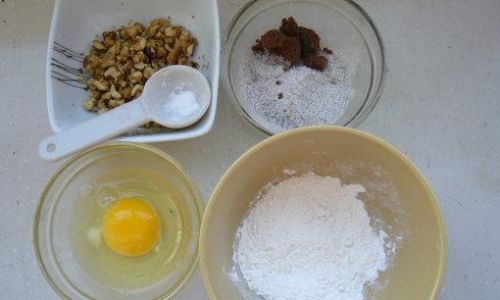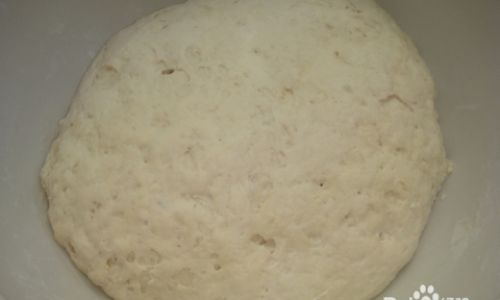Introduction: The Art of Microwave Egg Preparation
In the realm of quick and convenient cooking, the microwave oven has undeniably revolutionized our kitchens. From reheating leftovers to defrosting frozen foods, its versatility makes it a staple in modern households. However, one of the most debated and intriguing uses of the microwave is cooking eggs. Can you really achieve a fluffy, tender, and perfectly cooked egg using this appliance? The answer is a resounding yes, but it comes with a caveat: mastering the art of microwave egg cooking, particularly timing, is crucial.
This guide delves into the intricacies of microwave egg preparation, focusing on how long it takes to cook various types of eggs to perfection. We’ll explore different methods, tips for achieving consistent results, and troubleshoot common pitfalls. By the end, you’ll be equipped with the knowledge to whip up a microwave-cooked egg dish that rivals any stove-top or oven-baked creation.

Understanding Microwave Cooking Principles
Before diving into specific recipes and timings, it’s essential to grasp the basics of microwave cooking. Unlike conventional ovens that rely on convection currents to distribute heat, microwaves use electromagnetic radiation to excite water molecules in food, causing them to vibrate and produce heat. This direct heating method is incredibly efficient but also requires precise control to prevent overcooking or uneven heating.
Eggs, being high in water content, are particularly susceptible to the rapid heating effects of microwaves. This means that even slight variations in cooking time can lead to drastically different results. Therefore, understanding your microwave’s power settings, the size and type of egg you’re using, and the desired doneness are paramount.
Types of Eggs and Their Microwave Cooking Times
- Scrambled Eggs
Scrambled eggs are a classic breakfast staple that can be easily prepared in the microwave. The key to success lies in achieving a creamy, tender texture without drying out the eggs.
Method:
- Crack 2-3 large eggs into a microwave-safe bowl.
- Add a splash of milk or water (optional) for a creamier texture.
- Season with salt, pepper, and any desired spices or herbs.
- Whisk the eggs thoroughly until yolks and whites are fully combined.
- Microwave on medium-high power (about 70% of full power) for 30-45 seconds. Pause and stir halfway through to ensure even cooking.
- Continue microwaving in 10-second intervals, stirring after each, until the eggs reach your desired consistency. Typically, this takes around 1-1.5 minutes total.
Tips:
- Using a non-stick spray or a small amount of butter or oil in the bowl can prevent sticking.
- Be cautious of overcooking, as microwaved scrambled eggs can quickly become rubbery.
- Poached Eggs
Poached eggs are a delicate treat, characterized by their soft, runny yolks and firm whites. Achieving this balance in the microwave can be tricky but is entirely doable with the right technique.

Method:
- Fill a microwave-safe mug or small bowl halfway with water.
- Crack an egg into a small ramekin or cup.
- Carefully slide the egg into the water. It’s helpful to use a spoon to create a gentle whirlpool to help the egg hold its shape.
- Cover the mug or bowl with a lid or plastic wrap (vented to avoid steam build-up).
- Microwave on medium power (about 50% of full power) for 30-45 seconds for a runny yolk or up to 1 minute for a fully set yolk.
- Carefully remove the egg with a slotted spoon and let it drain on paper towels.
Tips:
- Adding a splash of vinegar to the water can help the egg whites coagulate more evenly.
- Experiment with cooking times to find your perfect yolk preference.
- Fried Eggs
While traditional frying offers the quintessential crispy edges and runny yolks, microwaving a fried egg-style dish is possible with a bit of creativity.
Method:
- Lightly grease a microwave-safe plate with butter or oil.
- Crack an egg onto the plate.
- Season with salt and pepper.
- Microwave on high power for about 45-60 seconds. The exact time depends on your desired yolk doneness: less time for runny yolks, more for fully set yolks.
- Carefully flip the egg over (using a spatula or fork) and microwave for an additional 10-20 seconds to cook the other side lightly.
Tips:
- Achieving a truly crispy edge in the microwave is challenging, but you can enhance texture by briefly browning the edges under a broiler or using a toaster oven.
- Be cautious when flipping, as microwaved eggs can be fragile.
- Boiled Eggs
Boiled eggs, whether hard-boiled or soft-boiled, are a versatile protein source enjoyed in various forms, from breakfast salads to snacks.

Method for Hard-Boiled Eggs:
- Place eggs in a microwave-safe bowl and cover with cold water, ensuring the eggs are fully submerged.
- Microwave on high power for 5 minutes for medium-sized eggs. For larger eggs, increase to 5.5-6 minutes.
- Carefully remove the eggs using a spoon and place them in an ice water bath to stop the cooking process.
Method for Soft-Boiled Eggs:
- Follow the same steps as for hard-boiled eggs but reduce the microwaving time to 3.5-4 minutes for medium-sized eggs.
- Peel the eggs under running cold water to avoid shell fragments.
Tips:
- Always use cold water and start with room temperature eggs to prevent cracking.
- The ice water bath is crucial for stopping the cooking process and making the shells easier to peel.
- Omelets
Microwave omelets might sound unconventional, but with the right technique, you can enjoy a fluffy, filling breakfast in minutes.
Method:
- In a microwave-safe bowl, combine 2-3 beaten eggs with your choice of fillings (e.g., chopped vegetables, cheese, herbs).
- Stir in a splash of milk or water for a lighter texture.
- Season with salt and pepper.
- Microwave on medium-high power for 1 minute. Pause and stir gently to distribute the fillings and ensure even cooking.
- Continue microwaving in 20-second intervals, stirring after each, until the eggs are set but still moist (usually 1.5-2 minutes total).
Tips:

- Adding a bit of flour or cornstarch can help stabilize the omelet and prevent it from becoming too runny.
- Be gentle when stirring to avoid breaking up the fillings.
Troubleshooting Common Issues
- Overcooking: Microwaved eggs can quickly become rubbery or dry. Always err on the side of undercooking and finish with short intervals to avoid this.
- Uneven Cooking: Stirring halfway through cooking and using lower power settings can help distribute heat more evenly.
- Exploding Eggs: Cracks in the shell or eggshell fragments in the bowl can cause eggs to explode. Always start with whole, intact eggs and use a microwave-safe container.
- Sticky Eggs: Using non-stick spray, butter, or oil can prevent eggs from sticking to the bowl.
Conclusion: Perfecting Your Microwave Egg Craft
Mastering microwave egg cooking is a rewarding endeavor that opens up a world of quick, nutritious meals. Whether you’re craving a fluffy omelet, a perfectly poached egg, or a quick scramble, with the right techniques and timing, your microwave can become a versatile tool for egg preparation.
Remember, consistency is key. Experiment with different power levels, cooking times, and ingredients until you find what works best for your microwave and personal preferences. With practice, you’ll soon be able to whip up delicious, microwave-cooked egg dishes that rival any stove-top creations.
In the end, it’s not just about the timing; it’s about understanding your microwave, the science behind egg cooking, and the art of adaptation. Happy microwaving, and bon appétit!






0 comments